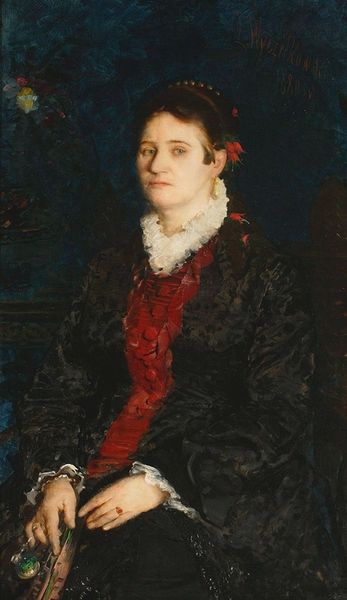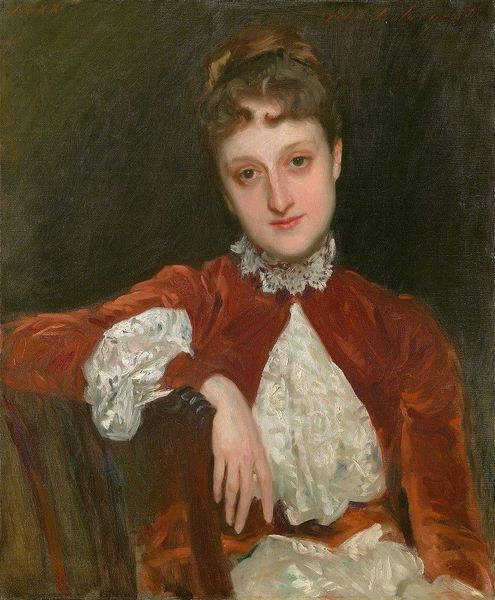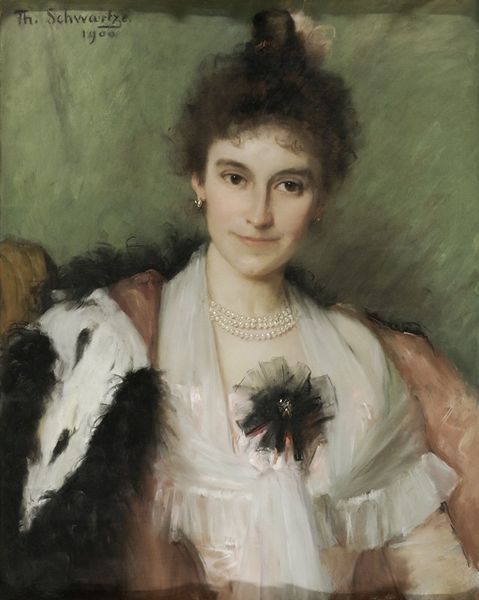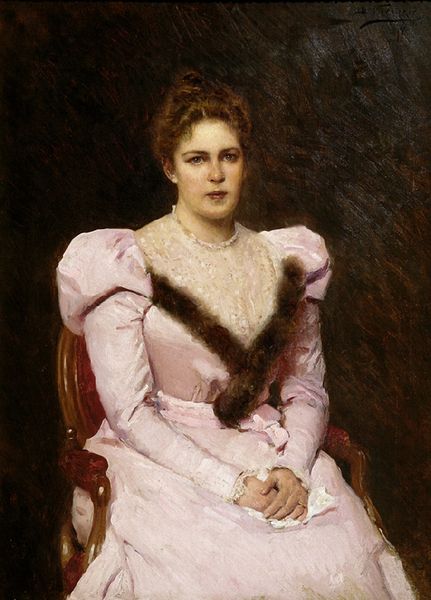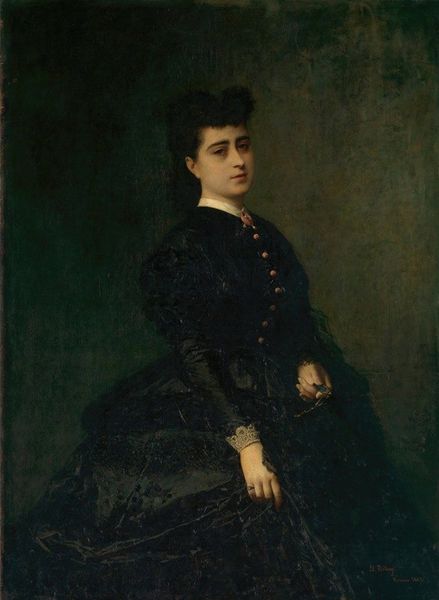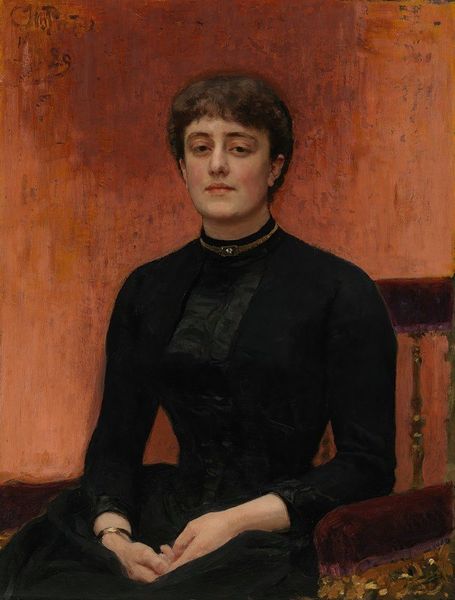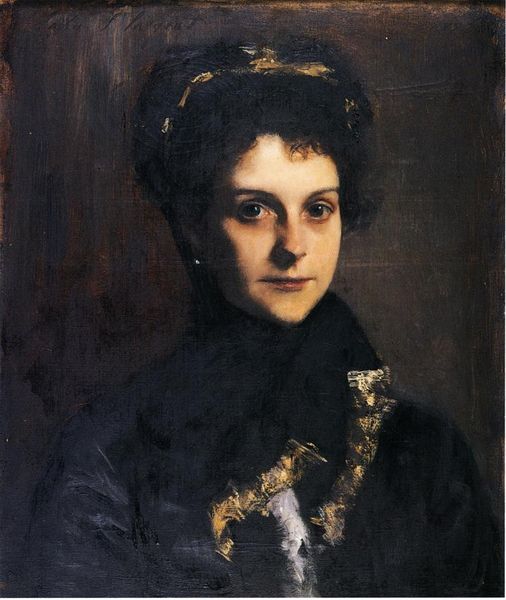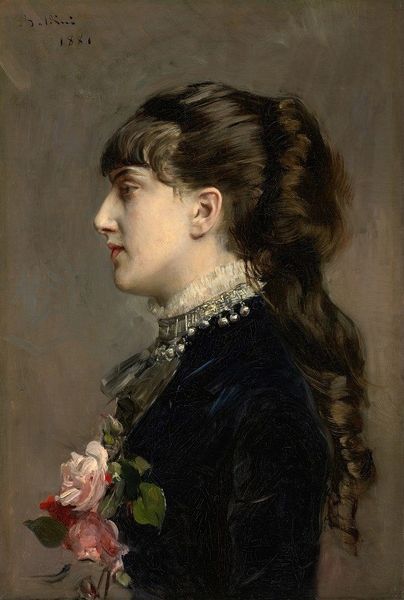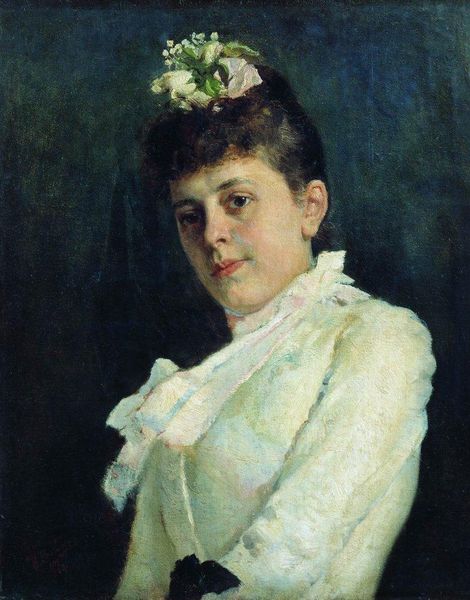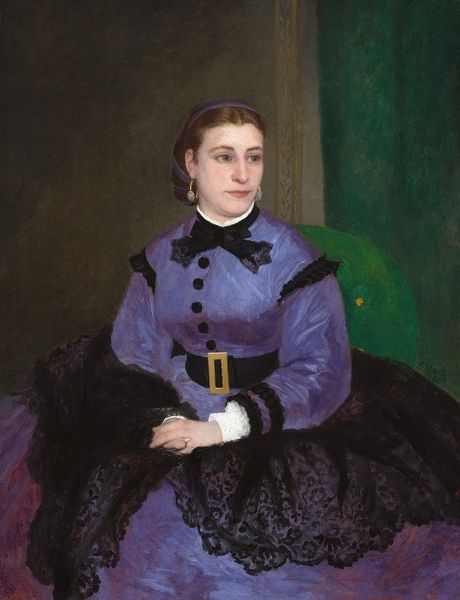
Copyright: Public Domain: Artvee
Curator: Standing before us is Sir John Everett Millais's "Countess de Pourtales, The Former Mrs Sebastian Schlesinger," an oil-on-canvas portrait completed in 1876. Editor: It’s incredibly serene. The subdued palette really emphasizes the subject's poise. Curator: Millais masterfully employs a limited color range. Consider how the darkness of her dress is punctuated by the light in her face, framing it almost as if a jewel. How do you view Millais's engagement with societal standards and conventions, if at all apparent in his portrayal of Countess de Pourtales? Editor: Well, the fur muff in her hands and the intricate lace collar signify her upper-class status. But notice how the dark color choices in the background and her dress itself downplay excessive flamboyance. Millais navigates a tightrope, representing the Countess within established societal parameters while simultaneously hinting at an understated elegance. The consumption of such finery becomes indicative of class standing. Curator: The material qualities contribute profoundly to the portrait’s emotional effect, I concur. Think about the visible brushstrokes in the background, which bring out an interesting texture which makes it hard to identify a true, real space and instead something ethereal. This plays well with the Academic art that emphasizes details, while Romanticism would influence the expression. What stands out to you when you engage closely with its construction? Editor: For me, it is the careful distribution of light. The way it catches the pearls in her ears, highlighting their shape. The slight shadows around her eyes—details that, though subtle, add immense depth to her characterization and formalize the work towards realism while alluding towards her past. The artist captured not only her physical likeness but seemingly something more profound: the aura of her time. Curator: Absolutely. This examination deepens our understanding of both the sitter and Millais's skill, showing how artists can indeed negotiate and respond to shifting social and political influences via what might otherwise be deemed a 'simple' portrait. Editor: Agreed. Spending time with the painting and considering its construction, style, and materiality allows for a richer reading that is worth more than just face value.
Comments
No comments
Be the first to comment and join the conversation on the ultimate creative platform.
